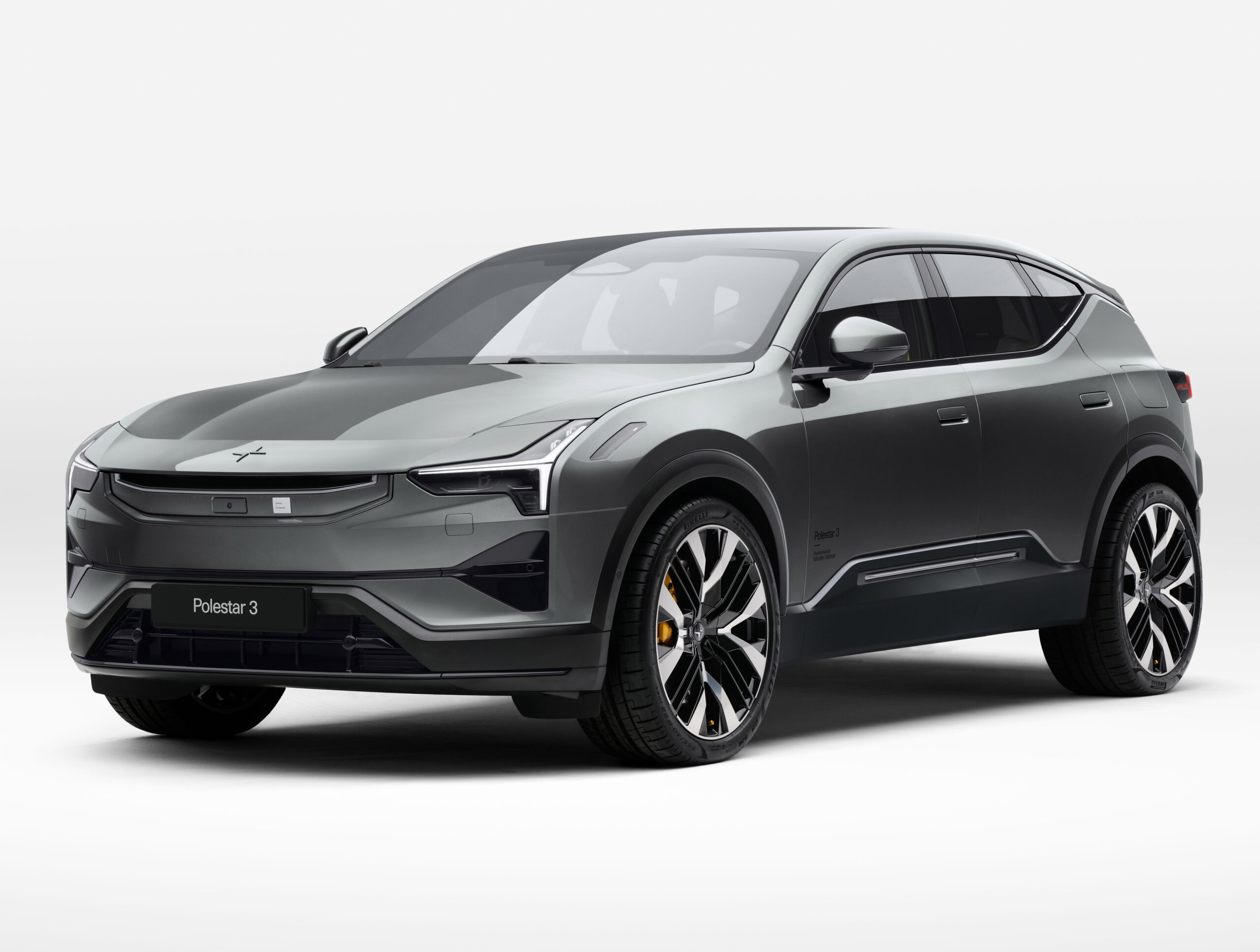

Do you remember what you were doing when Dodge came out with its last new model, the Dart, in 2012? We don’t blame you if you don’t, that was a long time ago. Things are finally changing, however, with the introduction of the all-new Dodge Hornet – a subcompact crossover based on the Alfa Romeo Tonale. This is certainly re-badging at its finest, but Dodge has injected a palpable amount of aggression into the feel of this little thing, in both GT and R/T plug-in hybrid forms. Is it the mainstream comeback story Dodge needs right now?
The Hornet is a modern case of badge engineering in the same vein as the GM large SUV family (Tahoe, Yukon, Escalade, etc.). Here, the Alfa Romeo Tonale provides the bones and body, as well as one of the powertrains, while Dodge provides a few design details, a tweaked interior, and a bit of street cred. To be fair to Alfa, we haven’t driven the Tonale yet, so there really are no comparisons to be made when it comes to driving dynamics. We suspect that it will end up receiving a softer tune than this, as the Hornet is very sporty when equipped with the Track Pack.

Speaking of the Track Pack, it adds the 20″ black wheels, front Brembo brakes, Michelin Pilot Sport All-Season 4 tires, and the blacked-out badging you see on this particular model. 18″ and 17″ wheels are also available on lesser configurations, though they do not fill the wheels wells as satisfyingly as these 20’s do. When looking holistically at the car from a front 3/4 angle, the Hornet doesn’t appear to be anything more than a Tonale with a face transplant donated from the Dodge Charger. The general public that’s lacking the background knowledge on the origin of this car will love it. Those who know the Alfa connection might find that the execution didn’t go far enough. If only they could have tweaked the shape of the daylight opening just a tad bit, it might work a little better, especially around the c-pillar.
The rear end is not substantially different from its Italian platform-mate, with a horizontal light bar that uses a different design to the LED housings. The Dodge ‘rhombi’ logo sits in the center and illuminates red at night along with the accent bar, just like Volkswagen is beginning to do with its emblem. After that, the two major things to note are that the GT model does not come with exhaust ports, unless you’re going the theoretical GLH route. Only R/T plug-in hybrid models receive exhaust outlets, and the black molding that surrounds them and the rest of the lower portions of the body is shiny instead of matte, what you’re seeing here.

Inside, you’re looking at the nicest interior the brand has ever seen, which, depending on how you look at it, could be a good thing or a bad thing. Materials on the model I was driving were pretty solid. The upgraded leather seats had red mesh Alcantara inserts and were very comfortable for how heavily-bolstered they were. In a surprise move, Dodge gave both the driver and passenger’s seat 12-way power adjustments, including 4-way lumbar. That’s not something you typically see in this segment. The moonroof is only available on R/T+ models, and is a standard wide-type format, no panoramic option like the Jeep Compass.

The steering wheel and dashboard design are nearly copy-and-paste from the Alfa, however Dodge did tilt the center screen and module more towards the driver and altered a few details here and there to give it a sporty feel. R/T models are graced with the massive column-mounted paddle shifters from Alfa Romeo. Other than that, the only other differences between the GT and R/T interiors are the fact that the Sport button on the steering wheel moves down to the console where the engine auto stop-start button is, and the Sport button on the wheel gets replaces with a eDrive Modes button. That allows you to quickly shuffle between the different hybrid drive modes like eSave, Electric, and Hybrid.

The large LCD instrument cluster is standard, as is the 10.25″ UConnect 5 infotainment screen. It is the best application of UConnect I have used in a Stellantis product yet, so bravo to Dodge for making that happen. Wireless Apple CarPlay and Android Auto are standard, but if you don’t use those, the integrated UI is snappy and well-organized. The Hornet is available with a moonroof if you get a GT+, though it’s only the standard size – a panoramic option is not on offer.
In terms of space, the Hornet is definitely small on the inside, but not punishingly so. Head room is good in the front and back for me at 5’9″, but leg room in the second row is not as generous. Foot room is less plentiful here than in the GT due to to more mechanical elements being stuffed under the seat bottom cushion. The average American body will probably be fine, and if you want to sit three across in the back, the middle seat is not nearly as high up as it tends to be in vehicles like this. There’s a ski pass-through if you want to fit longer items in the car without folding down either outboard seating positions. Cargo volume comes in at 22.9 cubic-feet behind the second row, 50.9 behind the first row, both figures falling closer to the subcompact competitors than the compact ones like RAV4.
The R/T is powered by a 1.3L turbocharged 4-cylinder paired with a 120-horsepower electric motor on the rear axle to give you 288 horsepower and 383 lb.-ft. of torque. The transmission is a 6-speed automatic instead of the GT’s 9-speed. Though the EPA hasn’t released fuel economy figures for the hybrid system just yet, that’s okay because the R/T goes on sale later in the Spring as a 2024 model. They have some time. The rear electric motor and engine are not mechanically connected, but electronically work together to provide all-wheel drive, front-wheel drive, or even rear-wheel drive. We do know that the R/T will drive 30 miles using only electricity from the battery if you actually plug it in to charge. The on-board 7.4 kW AC charger can fill the 15.5-kWh battery in 2.5 hours when using a level 2 charger, but it can be done in one sweet night when using the 110V plug in your garage.
If you want The Hornet GT is powered by the new Hurricane4 2.0L turbocharged 4-cylinder engine making 268 horsepower and 295 lb.-ft. of torque. Torque-vectoring all-wheel drive and a 9-speed automatic transmission are standard, but the engine is rated at a measly 24 mpg combined via a 13.5-gallon tank. Many competitors offer better numbers in that area, but theres’ a solution in the R/T. Dodge says that engaging the Sport drive mode in the GT enables the quickest 0-60 acceleration time – 6.5 seconds. Though, most of us were getting unofficial times closer to 6 seconds, so that could be a tad underrated.
Dodge put a lot of effort into making sure the driving dynamics between the R/T and GT would feel similar. There’s no doubt that the R/T is heavier, but the steering still feels decently-weighted and the suspension feels firm but comfortable. Pretty much everything about the plug-in hybrid feels just about the same as the gas model, until you push the accelerator. If you are driving in Sport mode, the Hornet defaults to the Hybrid drive profile, meaning the electric motor and engine are both ready to team up if you need the power. With 13 more horsepower but 88 more lb.-ft. of torque, the acceleration is noticeably more immediate than the gas model. It doesn’t have the same neck-snapping acceleration as many fully-electric vehicles, but it is more than enough power.
If you want an extra burst of power, the PowerShot function squeezes out 30 more horsepower for a couple of seconds. You can apparently go as fast as 5.1 seconds to 60 mph with this engaged, but we will have to run our own tests when we get one home for testing. Like the Grand Cherokee 4xe’s plug-in hybrid system, this one can be customized. Putting it into the Electric mode shuts off the 4-cylinder and makes the car an all-electric rear-wheel drive rig. Hybrid mode acts like a normal hybrid where the gas motor tries to conserve as much energy as possible by only operating when the battery needs a charge or the driver needs more immediate acceleration. It’s basically ‘automatic’ mode. If you want to treat this like a regular hybrid disregarding the plug, put it into the e-Save mode, as this will devote the engine generating a charge for the battery while also increasing regenerative braking intensity. You cannot adjust the intensity of the regen otherwise, and it never becomes as serious as one-pedal driving.
Because of the smaller engine, the R/T doesn’t have as much of the same….Dodge-ness about it that the GT does, but this is still a refreshing powertrain to experience from a brand like this. When it comes to body roll, sure, there’s a bit more of it in the corners, but Dodge tuned the suspension just enough to prevent it from ever feeling sloppy. The Track Pack-equipped models get the excellent 20″ wheels with Michelin Pilot Sport All-Season 4 tires, and they do wonders to keep this thing stuck to the pavement. I cannot speak to the smaller wheels, but I heard from other drivers that they are nowhere near as capable. Brake feel is pretty good for a plug-in hybrid, as there’s a lack of any weird or wacky sensations. Pedal travel feels just like it does in the GT, and you can’t really feel the transition between regenerative and friction breaking.
At low speeds, the R/T is very quiet, definitely a little bit quieter than the GT. If you are in Electric mode, the Hornet becomes a rear-wheel drive electric car. Probing the throttle doesn’t snap any necks like a big-battery electric car, and pushing the pedal too hard does force it to engage the engine most of the time. So, you can’t really test how fast it is to 60 mph in electric-only mode like you can in the Toyota RAV4 Prime. PowerShot is, as a result, not available in Electric drive mode, only Hybrid + Sport. To engage the feature, you just pull back on the two paddles once (don’t hold them, it just takes one tap). The LCD instrument cluster will show you where to take it from there.



